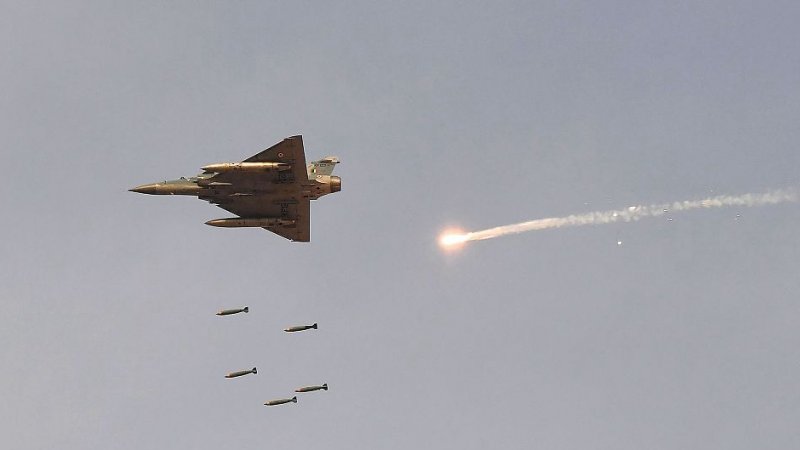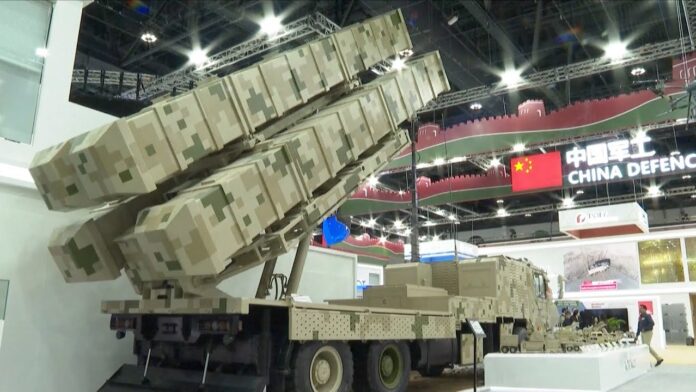Pakistan’s air force electrified global defense circles on May 7, 2025, downing up to six Indian aircraft, including three Rafale fighters, with Chinese-made J-10C jets and PL-15 missiles. This rapid retaliation to India’s Kashmir airstrikes showcased China’s advanced military technology. Yet, Pakistan’s battle-hardened pilots, not the hardware, drove the triumph. Their decades of combat against India and insurgents since 2001 honed a military adept at wielding sophisticated tools. China, by contrast, fields untested forces, absent from real warfare since 1979. The clash reveals a sharp divide: advanced weapons demand skilled operators to succeed.

China’s Leap in Arms Technology
China channels vast resources into its defense industry, crafting jets and missiles that rival Western systems. The J-10C fighter, armed with PL-15 long-range air-to-air missiles, proved formidable in Pakistan’s hands during the May 2025 conflict. Global media hailed the event as a milestone. “China has poured hundreds of billions of dollars into defense spending each year, developing sophisticated weaponry and cutting-edge technologies,” military observer Antony Wong Dong told CNN in 2025. The operation spiked AVIC Chengdu Aircraft’s stock by 40%, drawing interest from nations seeking high-performance arms. Antony Wong Dong added, “From China’s perspective, this is essentially a powerful advertisement” (CNN, 2025). Still, hardware alone cannot secure victory. China’s military systems continue to lack combat validation due to their long-standing absence from real war. Other nations’ struggles with Chinese systems underscore this. “Chinese weapons exports have been plagued for years by defects, adding that the seemingly inexpensive systems can drain security budgets due to maintenance expenses,” researcher Cindy Zheng told Bloomberg in 2025. Skilled operators remain essential.
Human Expertise Drives Victory
Weapons gain potency through skilled human execution. Mao Zedong captured this in 1938, stating, “Weapons are an important factor in war, but they are not the decisive factor; the decisive factor is the people, not the hardware,” as cited by The China Academy in 2025. “Even the most advanced weapon systems can be rendered ineffective without the training and experience to employ them,” a 2022 RAND Corporation study, Training and Human Factors in Combat, concluded. Pakistan’s air force embodies this truth. Its pilots log 30–40 more flight hours annually than Indian counterparts, join Shaheen exercises with China since 2011, and operate an aggressor squadron mimicking Rafale tactics. “Pakistan’s ability to down three Rafales in a single day was not luck, but the product of a decade of relentless sharpening,” former PLA Colonel Professor Wang Xiangsui told The China Academy in 2025. China relies on simulations, which fall short of combat’s chaos. Simulated drills may mirror combat conditions, but they cannot reproduce the chaos and uncertainty of real-world fighting. “You cannot simulate fear, confusion, and the moral friction of combat in a training exercise,” Professor James R. Holmes of the Naval War College stated. Pakistan’s human expertise shines where China’s falters.
Pakistan’s Combat-Hardened Military
Pakistan’s military thrives in near-constant conflict. Wars with India in 1947, 1965, 1971, and 1999, plus frequent Kashmir skirmishes, keep its forces sharp. The May 2025 Operation Sindoor showcased this, with J-10C jets downing multiple Indian aircraft in 100 hours. “Pakistan’s claim of shooting down Indian fighter aircraft, including its most advanced jet, with Chinese assets became a trending topic for Chinese policymakers and social media,” analyst Derek Grossman wrote in The Diplomat in 2025. Since 2001, Pakistan has waged counterterrorism operations, like Zarb-e-Azb (2014–2017), against militants in the Federally Administered Tribal Areas. “Pakistan’s military has been engaged in near-continuous operations, providing its forces with unparalleled combat experience,” scholar Stephen P. Cohen wrote in his 2004 book The Idea of Pakistan. Pakistan also integrates Chinese systems adeptly. Pakistan’s primary role lies in merging avionics, engines, airframes, and weapons into a unified combat platform. The Stockholm International Peace Research Institute noted in 2025 that Pakistan accounted for 63% of Chinese arms exports from 2020 to 2024, with 81% of its imports from China. “Pakistan provides China a low-cost testing ground for real-world military application without direct geopolitical risk,” SIPRI reported. This experience sets Pakistan apart.
China’s Absence from Modern Warfare
China’s military last fought in 1979 against Vietnam, retreating under pressure. Earlier clashes with the Soviet Union (1969) and India (1962) remained brief. China has not sent large-scale military forces beyond its borders since the Qing dynasty’s campaigns in Taiwan and Mongolia during the late 1600s. China conducts extensive wargames, from Taiwan encirclement drills to exercises near the Aleutian Islands. Yet, simulations cannot replicate warfare. Myanmar grounded JF-17 jets in 2022 over structural flaws, and Bangladesh reported quality issues in 2024. Pakistan’s navy operates F-22P frigates below capacity. A weapon’s true value reveals itself in combat, not in exhibitions or controlled environments. “The battlefield is unforgiving to those who confuse simulation with reality,” counterinsurgency expert David Kilcullen wrote in his 2009 book The Accidental Guerrilla. China’s untested forces face a steep challenge.
Global Surge in Chinese Arms Interest
Pakistan’s May 2025 success fueled fascination with Chinese weapons. Bloomberg, BBC, and CNN amplified China’s reputation. On X, @clashreport posted, “Chinese commentators declared the jets battle-proven, with Global Times citing Taiwanese experts saying their air force ‘has no chance.’” This boosted China’s arms export prospects. “It will potentially be a huge boost for Chinese arm sales in the international market,” retired PLA Senior Colonel Zhou Bo told CNN in 2025. Pakistan’s execution, not just the hardware, drove the outcome. The event reshaped perceptions of China’s military might.
China’s Proxy Testing Strategy
China leverages Pakistan to test its weapons, avoiding direct conflict. “Pakistan now serves as a proxy platform for Chinese military tech,” security expert Sajjan M. Gohel told Business Insider in 2025. “Pakistan provides China a low-cost testing ground for real-world military application without direct geopolitical risk,” SIPRI reiterated in 2025. This lets China gather data and claim credibility. Yet, China’s untested personnel limit its readiness. A Taiwan conflict would face the United States, with decades of combat experience. Chinese troops lack Pakistan’s depth of combat experience, and the force they may face in the Pacific is not India but the United States. Pakistan’s success shows that skilled operators, not just advanced weapons, determine outcomes.
Revealing the Human-Technology Gap
Pakistan’s May 2025 victory with Chinese J-10C jets and PL-15 missiles highlights China’s technological advances. Yet, Pakistan’s combat-tested pilots and tacticians, not the hardware, secured the win. China’s forces, idle since 1979, lack the battle experience to match. Pakistan’s wars with India and counterterrorism operations since 2001 have forged a military skilled at using sophisticated tools. The global excitement over Chinese arms obscures a deeper flaw: advanced weapons falter without seasoned operators. This gap between China’s untested forces and Pakistan’s battle-hardened military exposes a critical weakness in relying solely on technology.
The Saudi-led coalition’s campaign against Yemen’s Houthis since 2015 mirrors this human-technology gap. Saudi Arabia and the UAE, armed with U.S.-supplied Patriot air defense systems and precision-guided munitions, faced Houthi forces wielding Iranian-supplied drones and ballistic missiles. Despite intercepting numerous attacks, Saudi forces struggled to neutralize the Houthis, who maintained resilience through guerrilla tactics and concealment. “The Houthis have become adept at minimizing the damage [from Saudi airstrikes],” a 2024 RUSI report noted. Patriot interceptors, costing over $1 million each, countered low-cost Houthi drones, yet the group’s persistent attacks on Saudi infrastructure continued, showing that advanced American weapons alone could not overcome a determined, experienced adversary.

